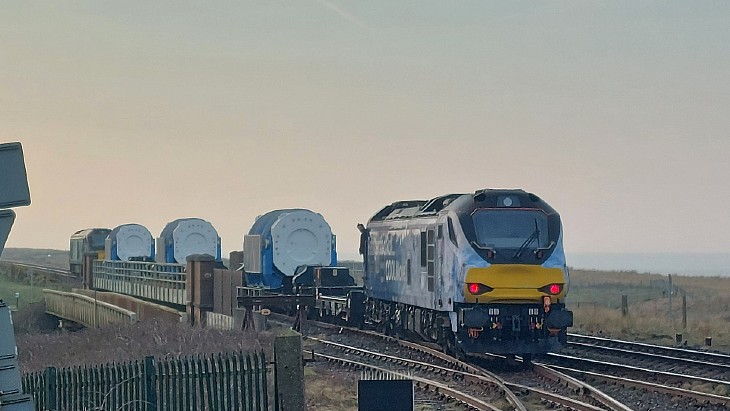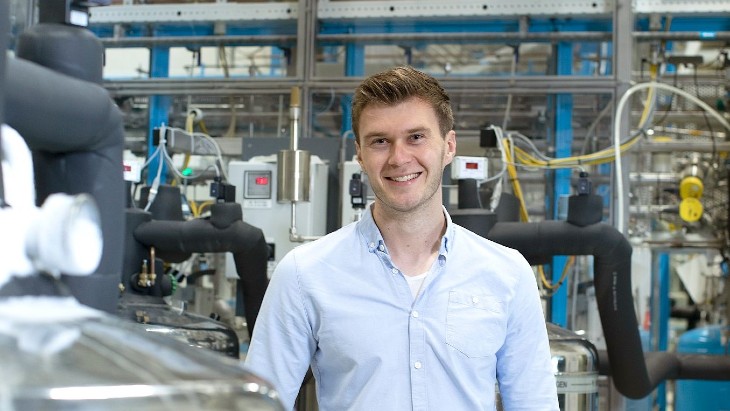Team uses muography to create 3D image of reactor
.jpg)
Muons are high-energy subatomic particles that are created when cosmic rays enter Earth's upper atmosphere. These particles naturally and harmlessly strike the Earth's surface at a rate of some 10,000 muons per square metre per minute. Muon tracking devices detect and track these particles as they pass through objects. Subtle changes in the trajectory of the muons as they penetrate materials and change in direction correlate with material density. Muon imaging, or muography, can reveal the inside of the deepest structures and provide direct images like a penetrating photography.
"Muons, like marathon runners, won't start with the same energy," said Sébastien Procureur, a researcher at the CEA. "Depending on the difficulty and length of the race, a number will stop along the way, and only a fraction of them will cross the finish line. This fraction that crosses the line tells us about the difficulty of the race. In muography, this difficulty corresponds to the thickness crossed and the density."
The muon telescopes designed at the CEA are equipped with Micromegas detectors, invented in 1994 by CEA's Institute of Research into the Fundamental Laws of the Universe (IRFU).
"In the Micromegas detector, we use a noble gas, because it has good properties that allow these ionisations to be preserved and therefore the passage of muons to be detected," Procureur said. "Subsequently, using electric fields that are applied in the gaseous volume, these electric charges are channeled to send them to reading electronics."
The technology has already been used to investigate several Egyptian pyramids to discover cavities hidden within their walls.
After the first dismantling phase of the G2 reactor, which was completed in 1996, teams entered the reactor to take videos and radiological contamination measurements, and metal samples to check the state of corrosion. But that was not enough: a solution had to be found to investigate further without destroying the installation.
"It was then that I discovered via an article the results of the muon telescope within the framework of the ScanPyramids project," said Laurent Gallego, head of the G2 and G3 reactor dismantling project at the CEA. "We asked the teams if it was possible to adapt this type of acquisition to structures such as our reactors, which are very massive and not very accessible".
"The first challenge in adapting muography to a dismantling project is that, compared to a stone pyramid with simple geometry, there are more than 20,000 components in a reactor," said Hector Gomez-Maluenda, another researcher at CEA.
The team began by making two major adjustments to the process used by prior groups: more detectors were required and the software used to stitch all the imagery generated from a large number of detectors needed improvement.
It was during their contribution to the G2 reactor dismantling project that the CEA-IRFU teams were called upon to verify, with muography, that the existing reactor plans, dating from the end of the 1950s, corresponded to the structure of the actual reactor.
The team combined 27 projections from four telescopes to derive the density map without any prior information on the reactor internal structure. The 3D reconstruction of the reactor was completed in March 2022.
"Despite its complexity and large dimensions, the reactor could be imaged in a relatively short time, with reasonably good-quality reconstruction being achieved with only a few days in each projection," the researchers said. "Although anticipated from the simulation, the analysis confirmed that only a limited number of projections are enough to visualise and localise the main elements of the reactor."
They added: "These conclusions open up new perspectives for the inspection and monitoring of nuclear sites over their entire operating lifetime as in their decommissioning phase, thus contributing to nuclear safety."
The research has been published in the journal Science Advances.
Established in the 1950s, Marcoule is the CEA's reference site for nuclear fuel cycle research including used fuel processing and recycling, and radioactive waste management. It was home to three prototype gas-cooled reactors - the 2 MWe G1 reactor, which was commissioned in 1956 and operated until 1968; and two 40 MWe reactors, G2 and G3, (1958-1980 and 1959-1984, respectively) - and the UP1 reprocessing plant, which closed in 2007. The three reactors and the UP1 plant are at various stages of decontamination and dismantling.
_17992.jpg)
_75800.jpg)








..._58412.jpg)
